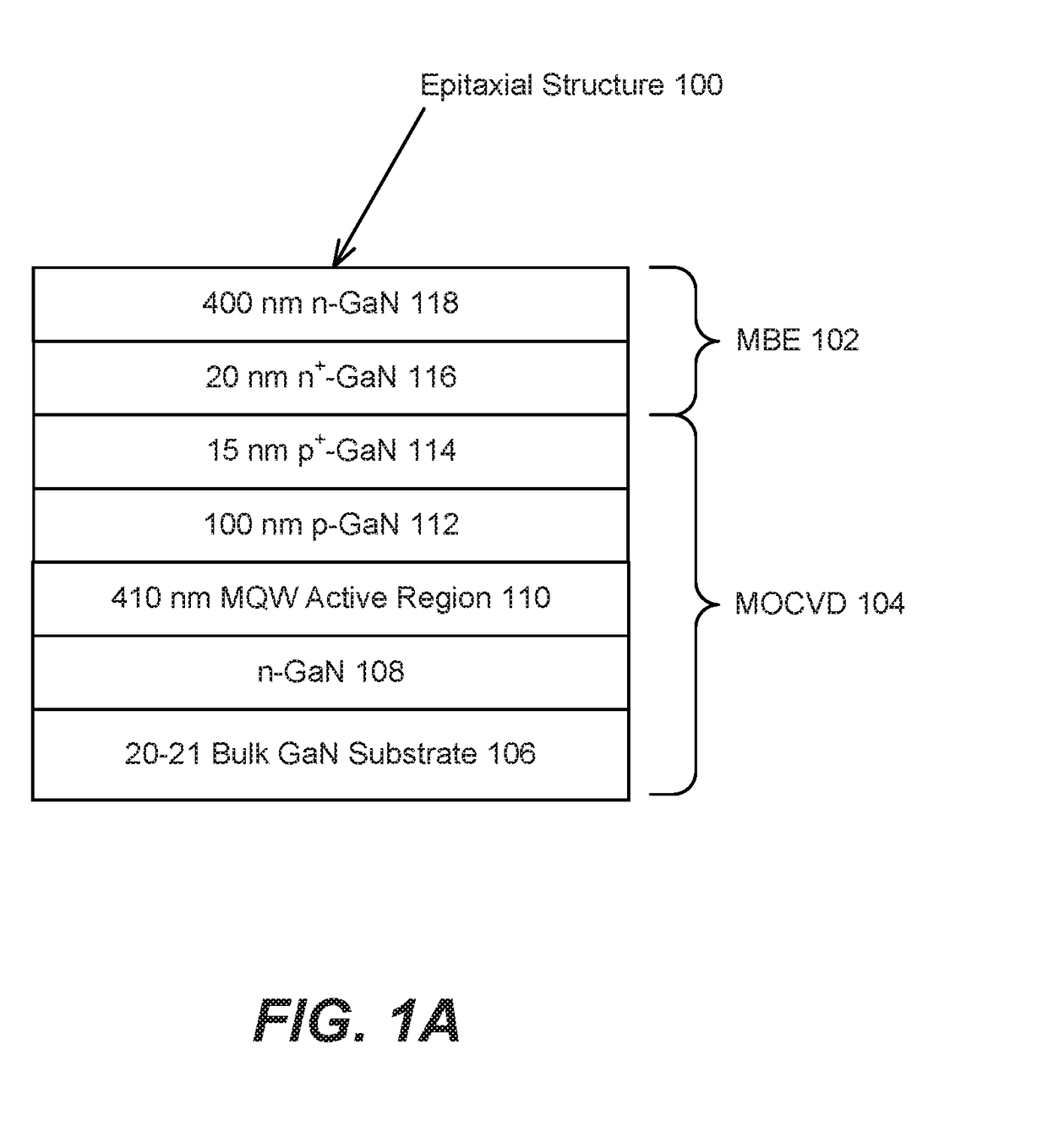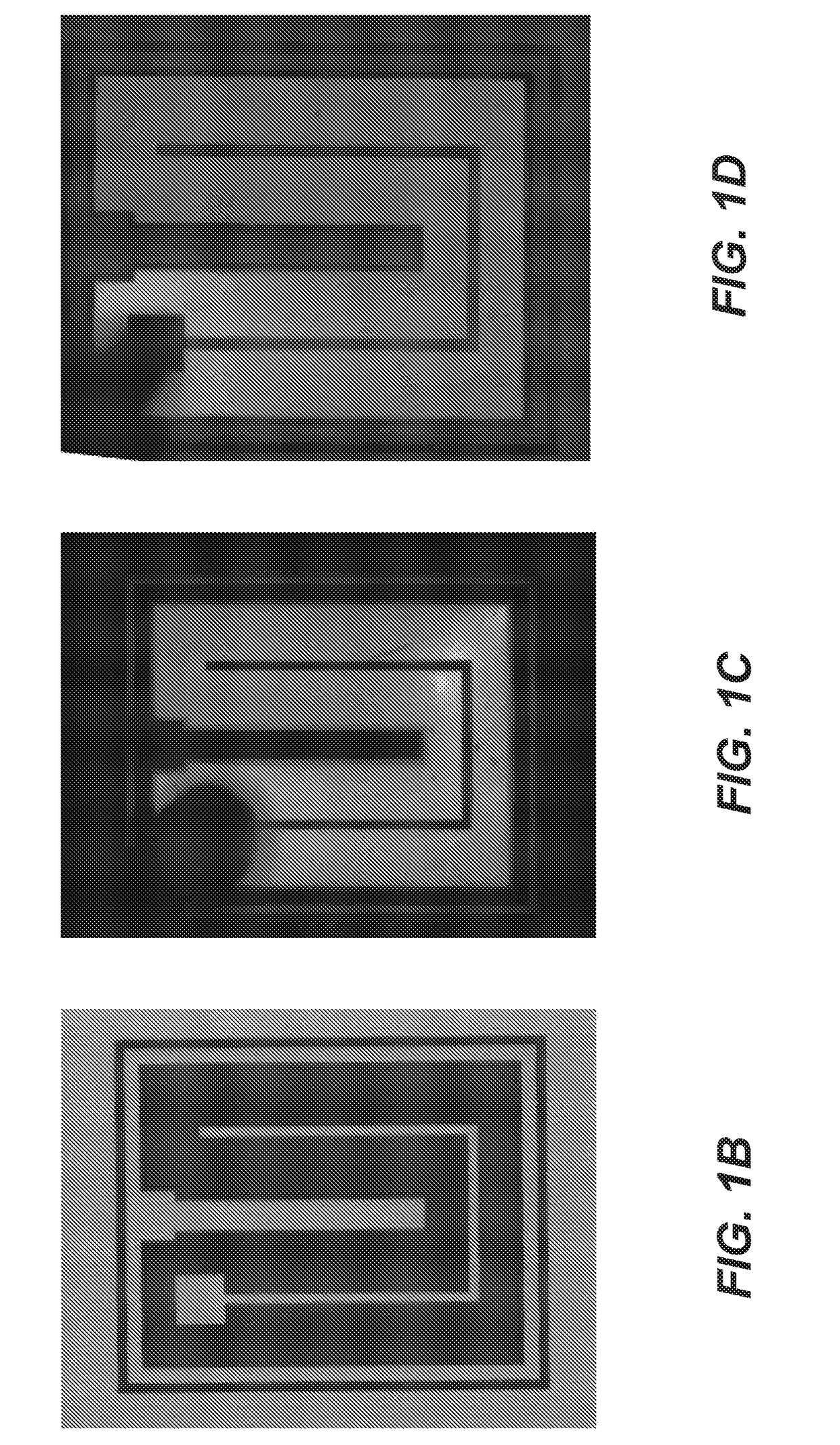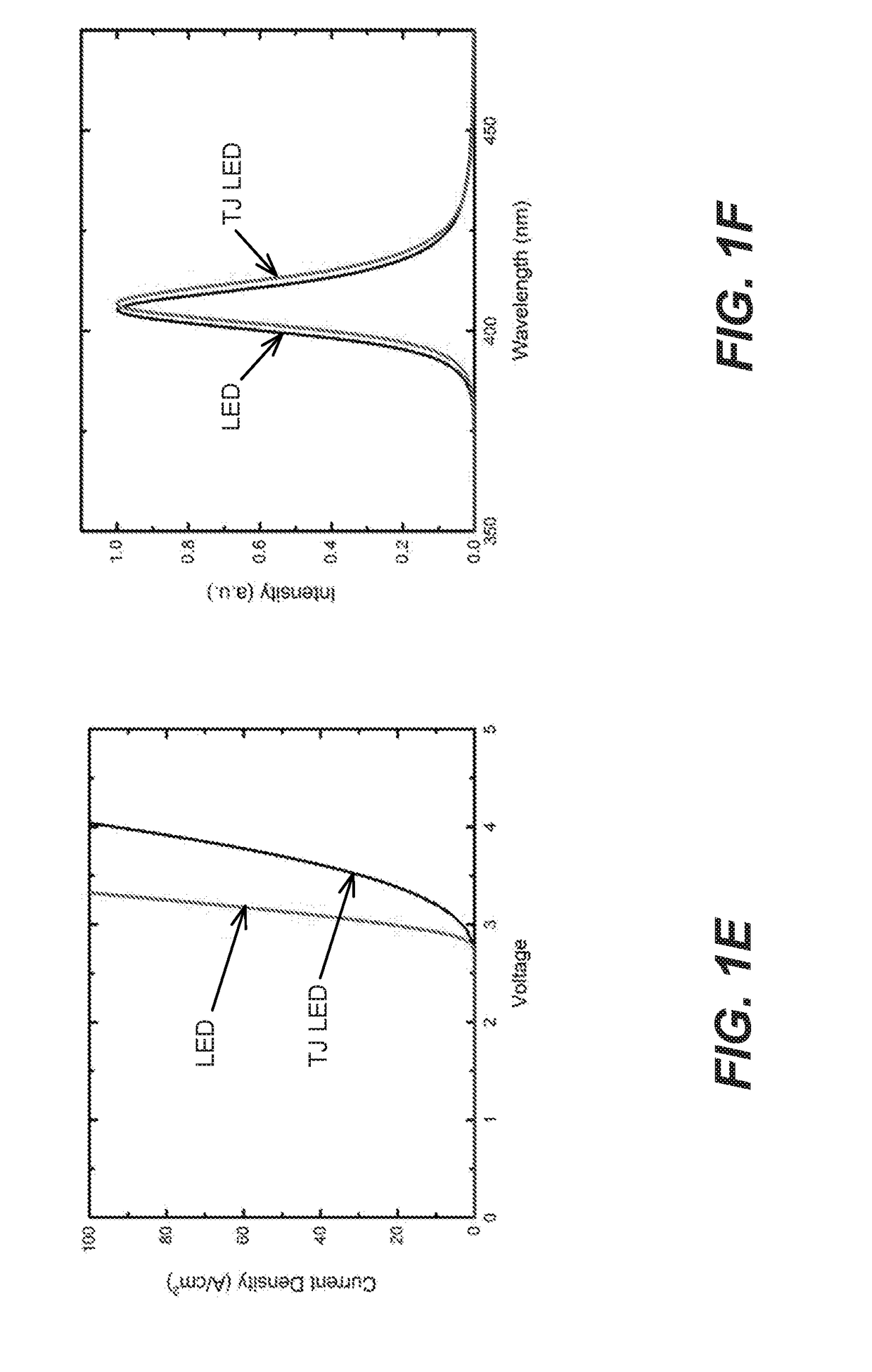Hybrid growth method for iii-nitride tunnel junction devices
a tunnel junction and hybrid technology, applied in the direction of crystal growth process, crystal growth process, polycrystalline material growth, etc., can solve the problems of low hole concentration and mobility, inability to use p-gan as a current spreading layer, difficult contact with nitride (p-gan) electrically, etc., to achieve better tunnel junctions, reduce the operating voltage of these devices, and increase efficiency
- Summary
- Abstract
- Description
- Claims
- Application Information
AI Technical Summary
Benefits of technology
Problems solved by technology
Method used
Image
Examples
Embodiment Construction
[0034]In the following description of the preferred embodiment, reference is made to a specific embodiment in which the invention may be practiced. It is to be understood that other embodiments may be utilized and structural changes may be made without departing from the scope of the present invention.
[0035]Overview
[0036]As noted above, the present invention comprises a hybrid growth method for III-nitride tunnel junction devices that uses MOCVD to grow one or more light-emitting or light-absorbing structures and MBE is used to grow one or more tunnel junctions.
[0037]Epitaxial Structures
[0038]To demonstrate the tunnel junction design according to the present invention, 410 nm emitting LEDs were grown by MOCVD on 20-21 bulk GaN substrates with a 15 nm p+-GaN cap as the final layer. The epitaxial structure 100 is shown in FIG. 1A, which illustrates an MBE tunnel junction grown on an MOCVD LED, wherein the layers of the structure 100 are annotated by their respective MBE 102 or MOCVD 1...
PUM
 Login to View More
Login to View More Abstract
Description
Claims
Application Information
 Login to View More
Login to View More - R&D
- Intellectual Property
- Life Sciences
- Materials
- Tech Scout
- Unparalleled Data Quality
- Higher Quality Content
- 60% Fewer Hallucinations
Browse by: Latest US Patents, China's latest patents, Technical Efficacy Thesaurus, Application Domain, Technology Topic, Popular Technical Reports.
© 2025 PatSnap. All rights reserved.Legal|Privacy policy|Modern Slavery Act Transparency Statement|Sitemap|About US| Contact US: help@patsnap.com



